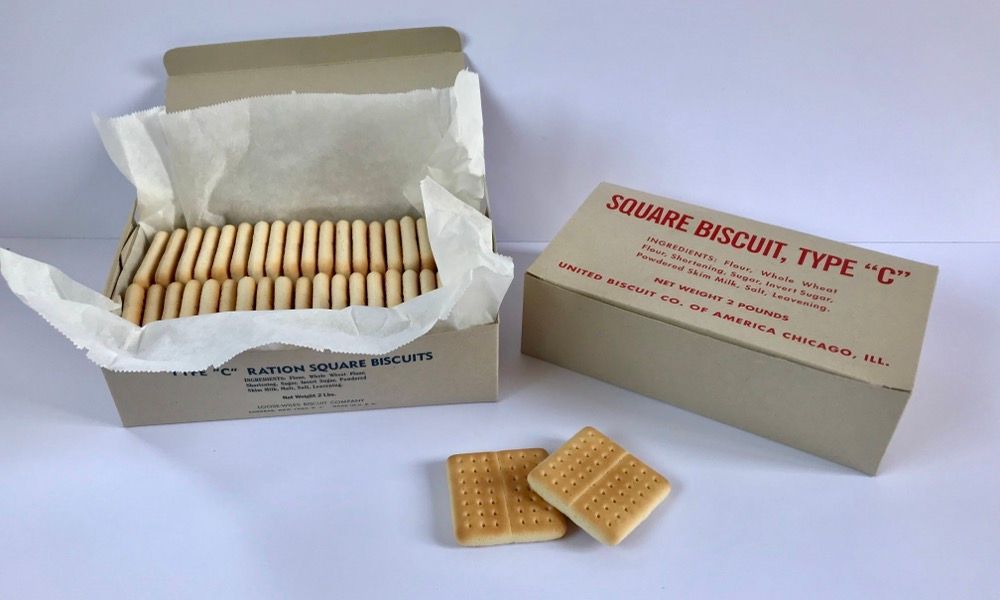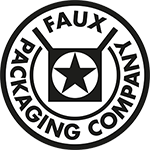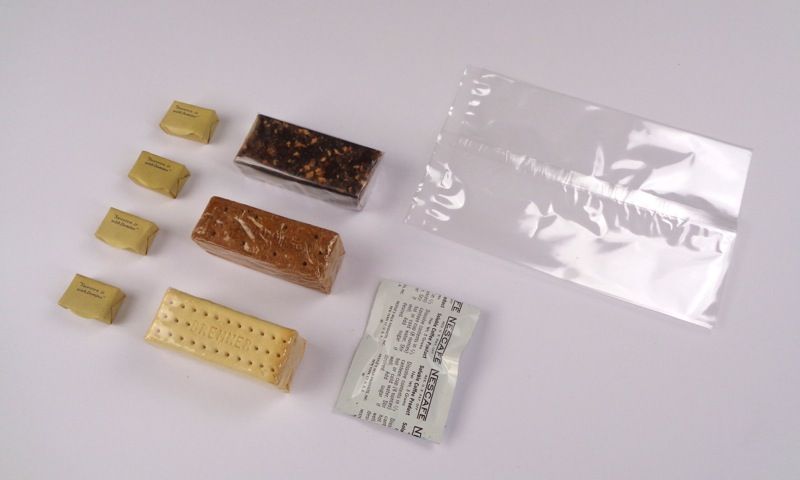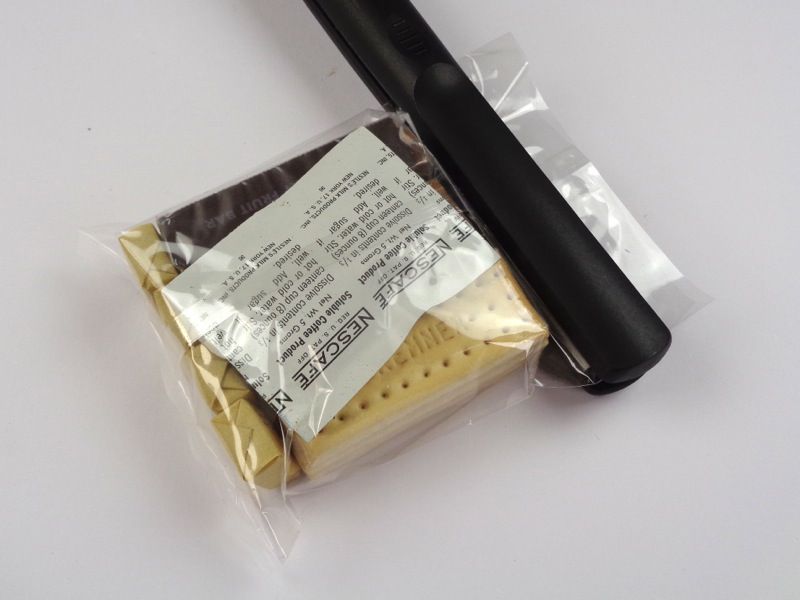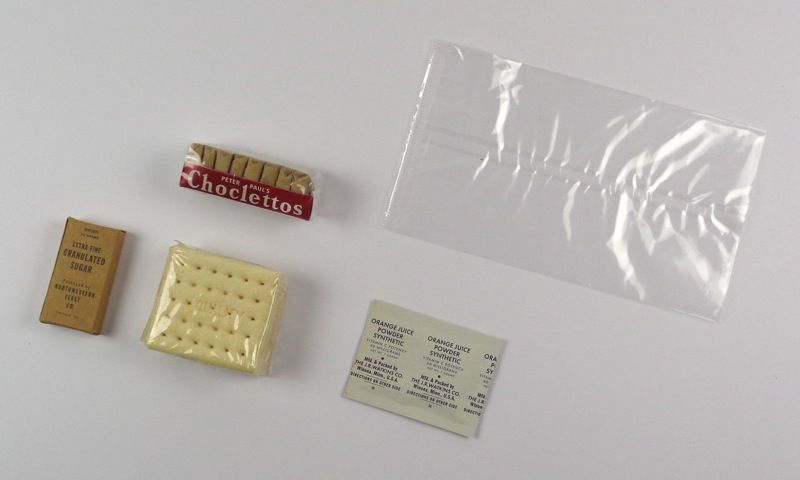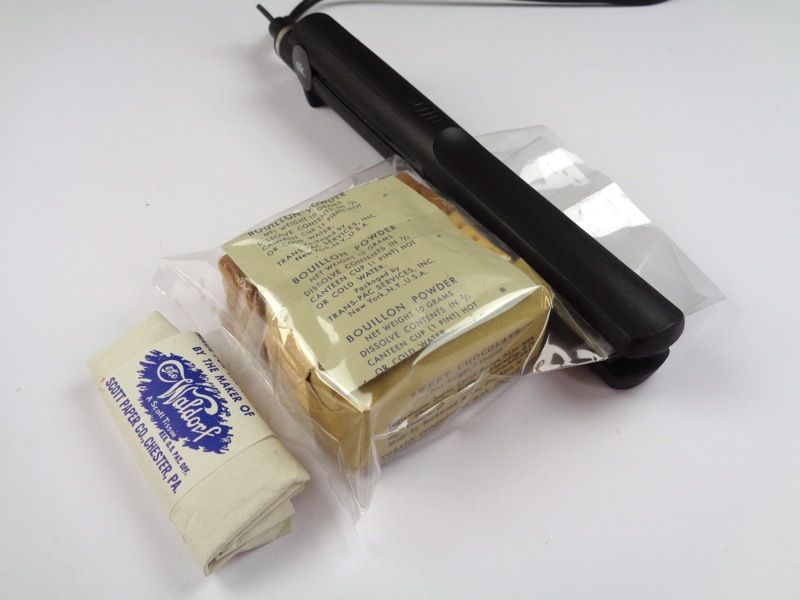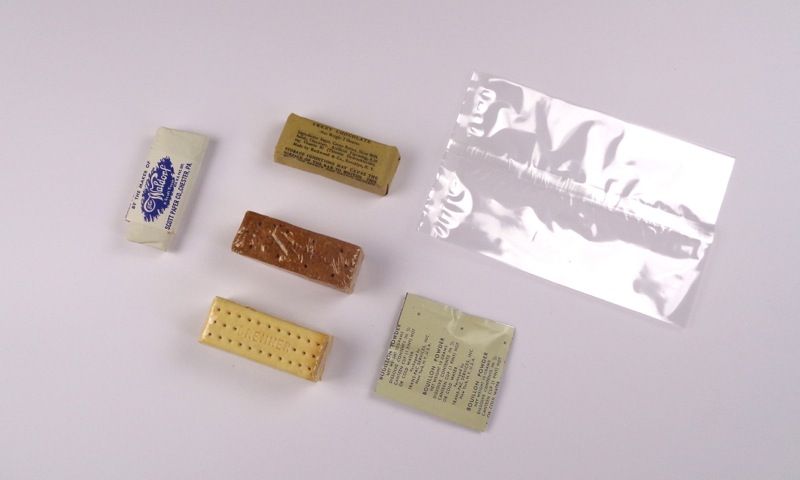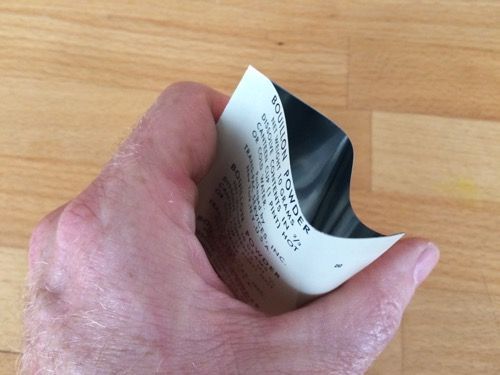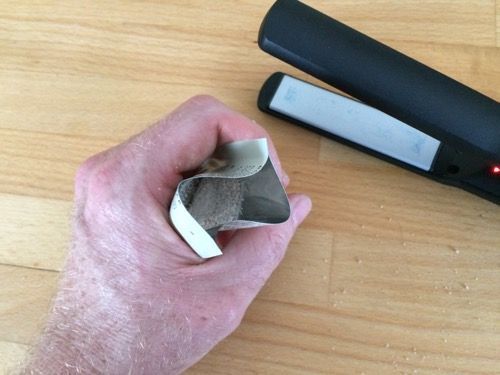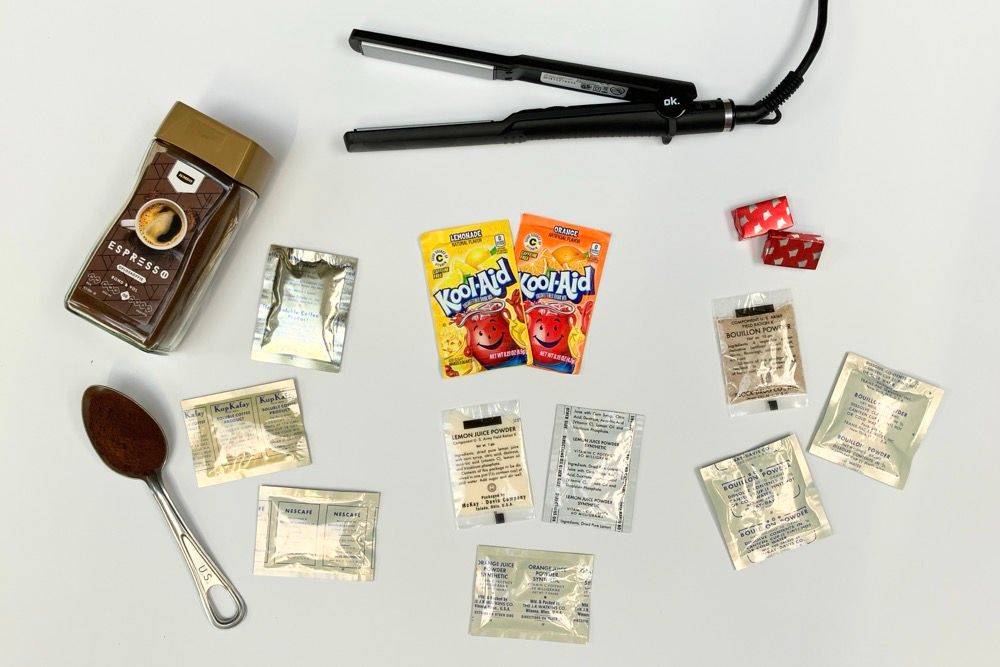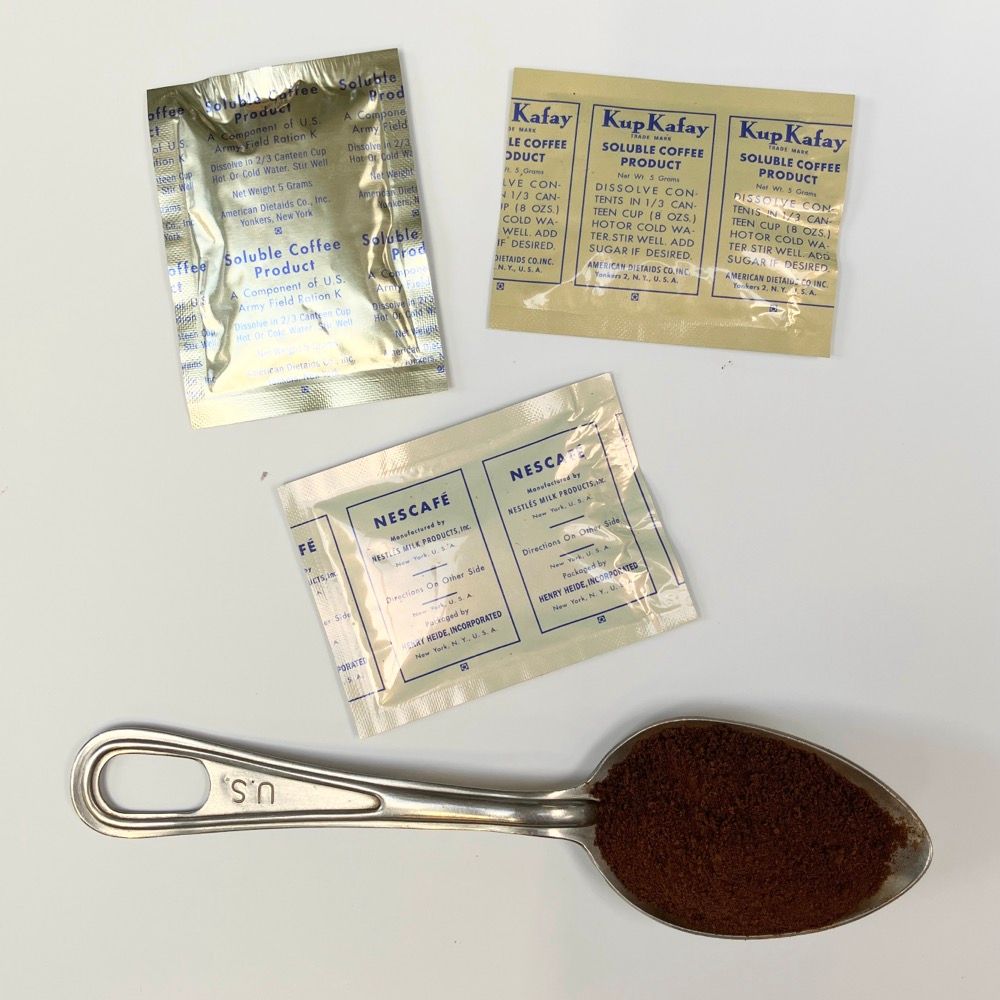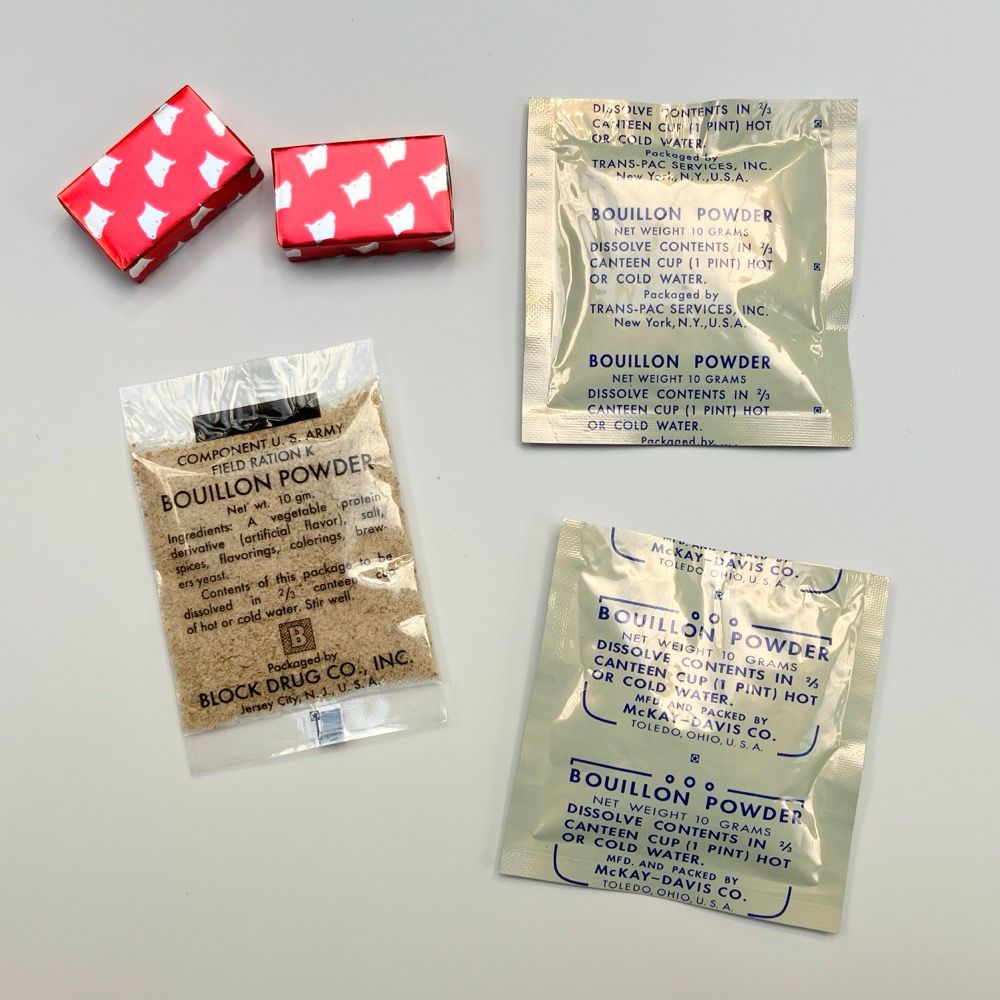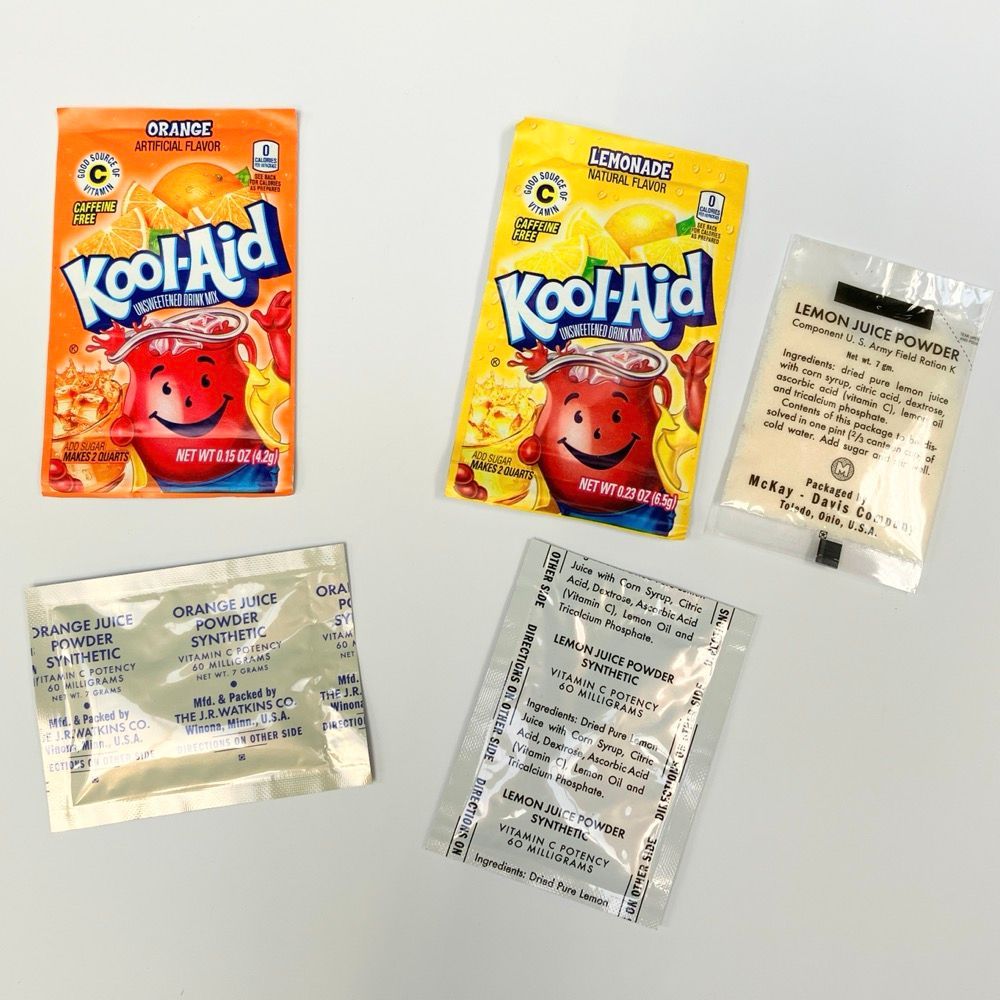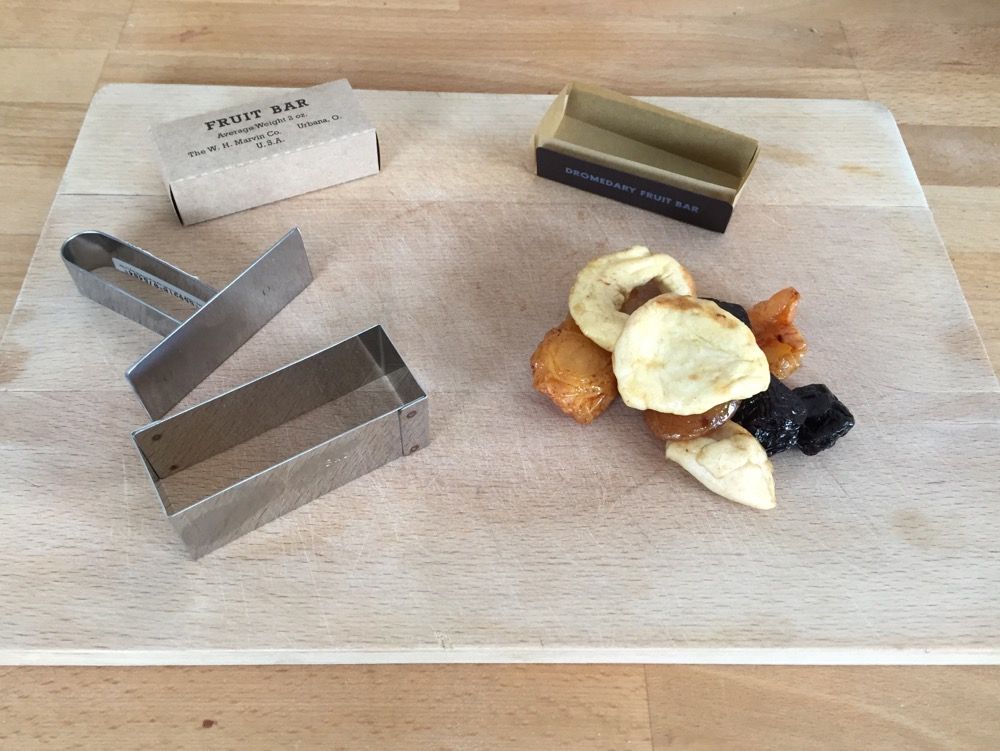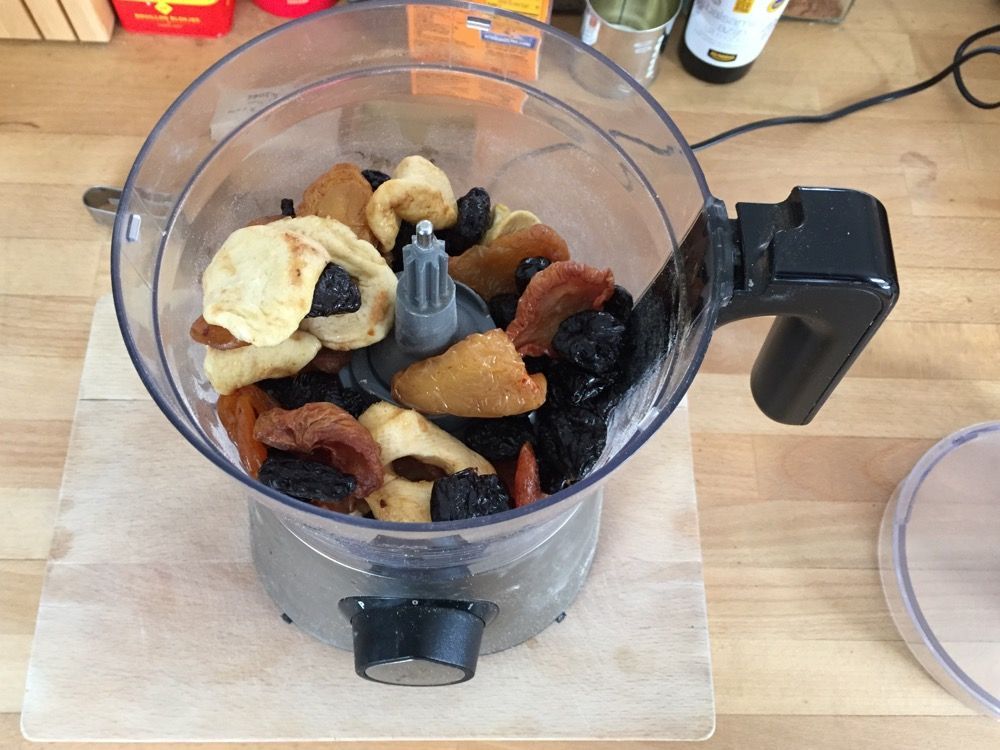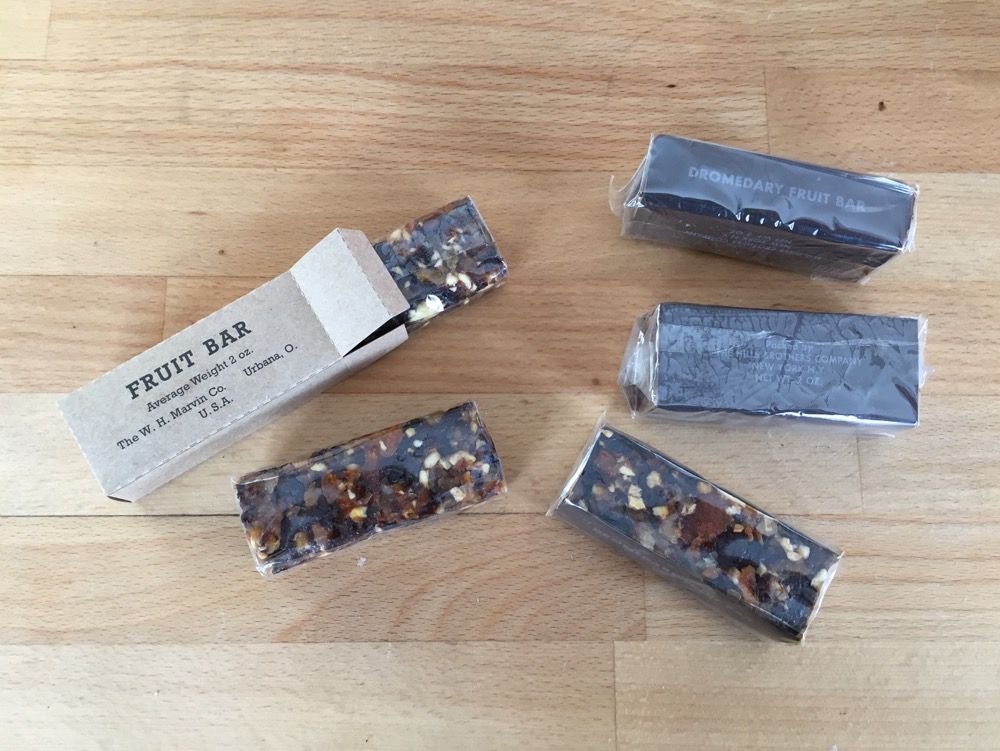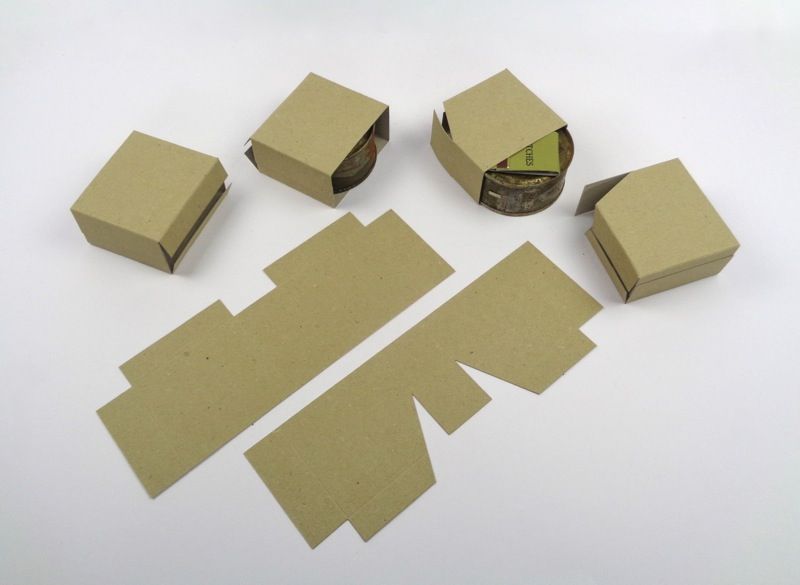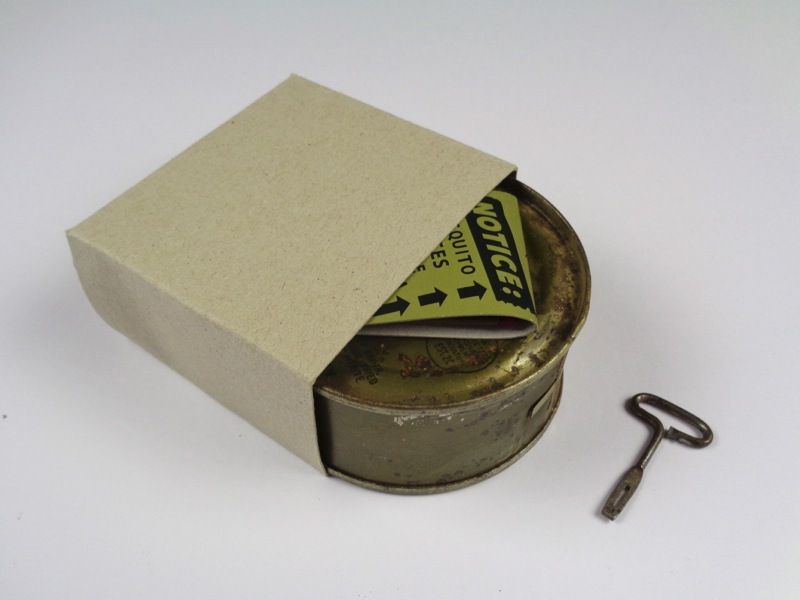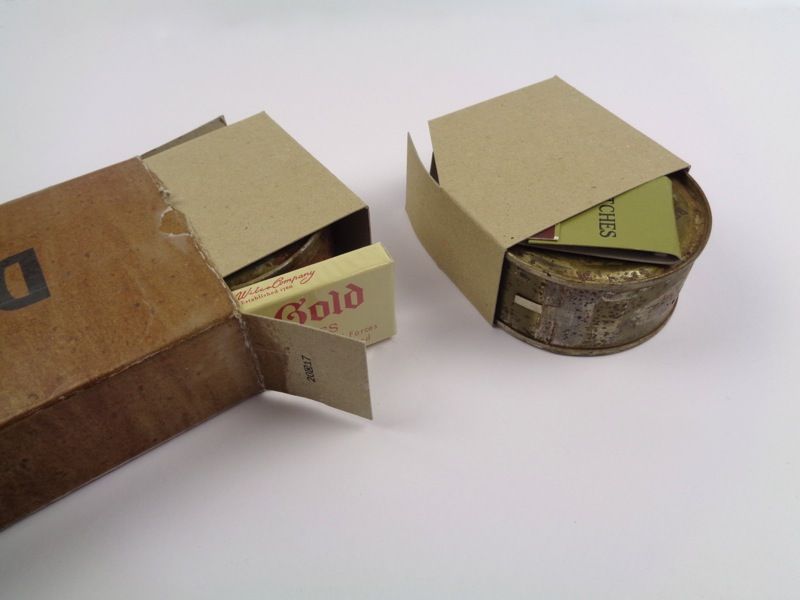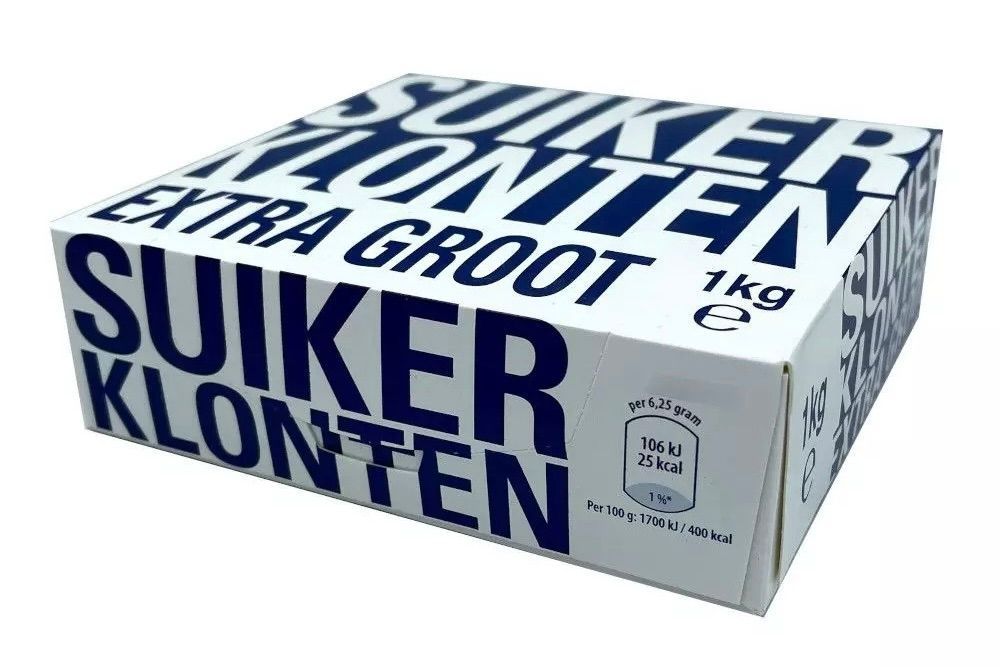Tips on how to assemble some items
Scroll down or click the links below for quick navigation:
Packing the K Ration units
Lets start with how to pack the components into the K Ration units. Shown here from left to right are the Supper, Dinner and Breakfast units.
The beverage envelopes, shown below the boxes, are placed inside the cellophane bag with the biscuits and confection. (See cellophane bags below.)
As you can see here, the can sticks out just a little bit from its sleeve. The cigarettes are placed along this side.
The key for opening the can is shown on the sleeve for visibility but should be placed inside the sleeve on top of the can. The matchbook is placed inside the sleeve on the other side of the can.
The chewing gum next to the boxes can be tucked in anywhere, but is usually tucked in between the sleeved can and the end of the inner carton. Or it was thrown in between the cellophane bag and the can sleeve.
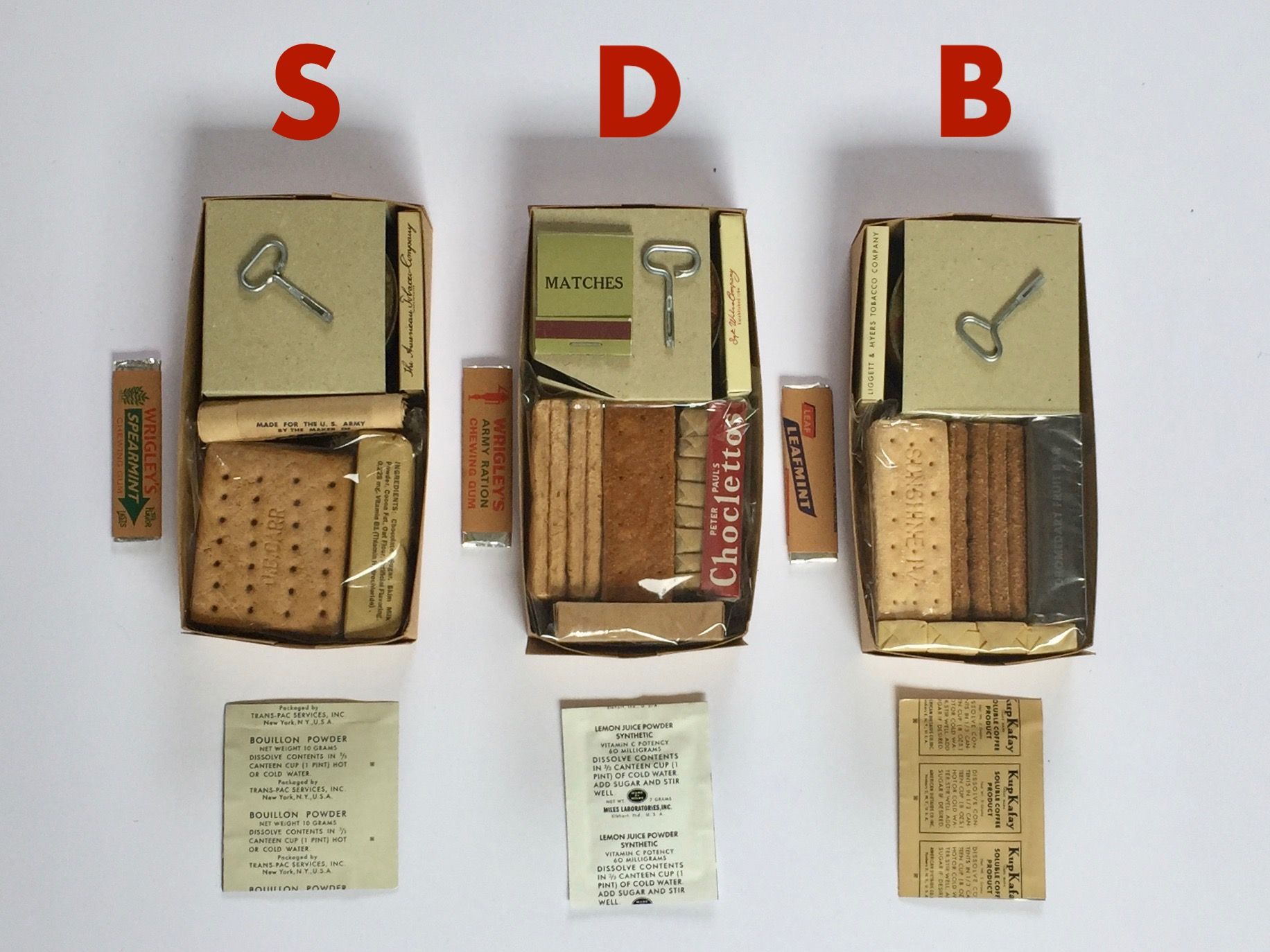
Cellophane bags
Large cellophane bags are included to seal the components in before placing them in the inner carton.
Here's a quick guide what and how to pack in to the large cellophane bag. I used original biscuits so that you get an idea how they fit with the rest. (The black object is the Hair Straightener to seal the bag.)
Breakfast: 4 tablets of Sugar, Fruit bar, envelope of Soluble Coffee Product and two packages of Biscuits.
Dinner: 1 package of 23 grams of Sugar (or 4 Sugar tablets), Confection, envelope of Lemon or Orange Juice powder and 2 packages of Biscuits or 1 package of square Biscuits.
Supper: Chocolate bar, envelope of Bouillon powder and 2 packages of Biscuits or one package of square Biscuits. The toilet paper is not sealed in the cellophane bag with the food components (although this was done sometimes).
Beverage envelopes
How to prepare the new beverage envelopes. You will need a heat sealer for this. A simple and cheap solution is a hair straightener. A clothes iron should work too.
For filling the beverage envelopes I recommend that you first try which instant coffee brand and amount you need for a big mug (8 ounces/240 ml) of coffee. I personally like to use instant espresso for a strong brew.
For the bouillon you can crumble up one 10-grams cube or go with a table spoon of powdered bouillon.
I strongly recommend to use
unsweetened lemonade powder for the Lemon or Orange juice powder. Make sure that the powder is
not sweetened with any other artificial sweetener (like stevia). There is sugar included in the Dinner unit for this purpose. The small sachets of
sugar free fruit juice powder of the
Kool Aid brand are a perfect option.
Caramels
The caramels used in the rations were of the hard candy type. Depending on the size used, the number fitting in a carton ranged from 5 to 8 pieces.
The best and easiest option I found available is the soft fudge caramels. Five blocks fit easy the different cartons used with the ration kits. The York Milk carton will even hold 6 pieces.
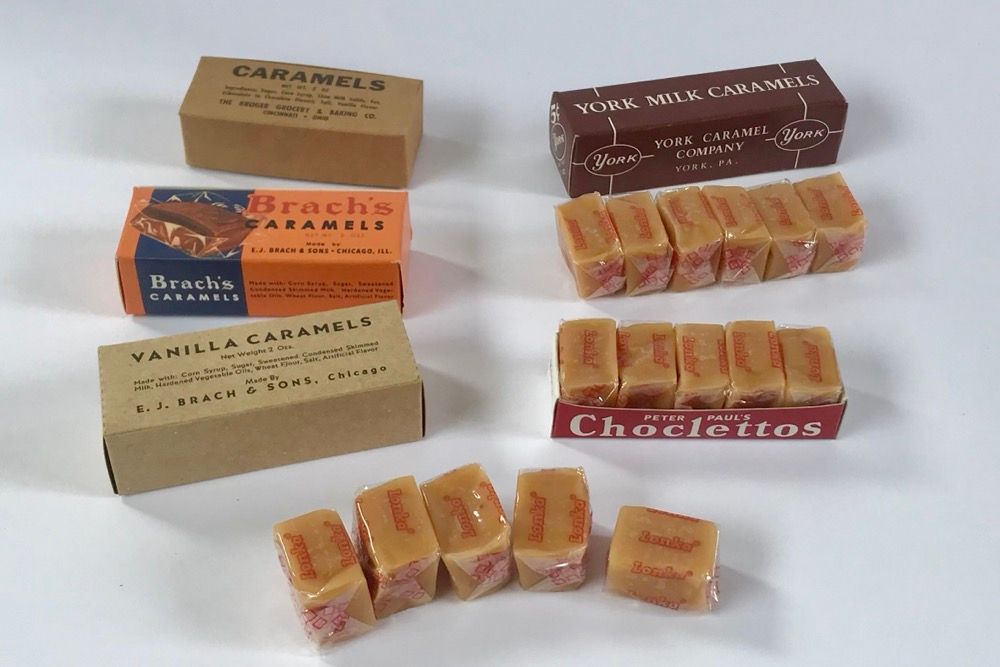
Malted Milk-Dextrose and Dextrose candy
The confection included in the Partial Dinner Unit of Menu #2 (1st generation) is the "Malted Milk-Dextrose and Dextrose Candy". These were made specifically for inclusion in field rations and were not available commercially.
The best alternative today are the Dextrose Energy tablets.
This is one of the few items that is not copied directly from an original but, due to its scarcity, based on photos. I used the same die as the Caramels to cut these.
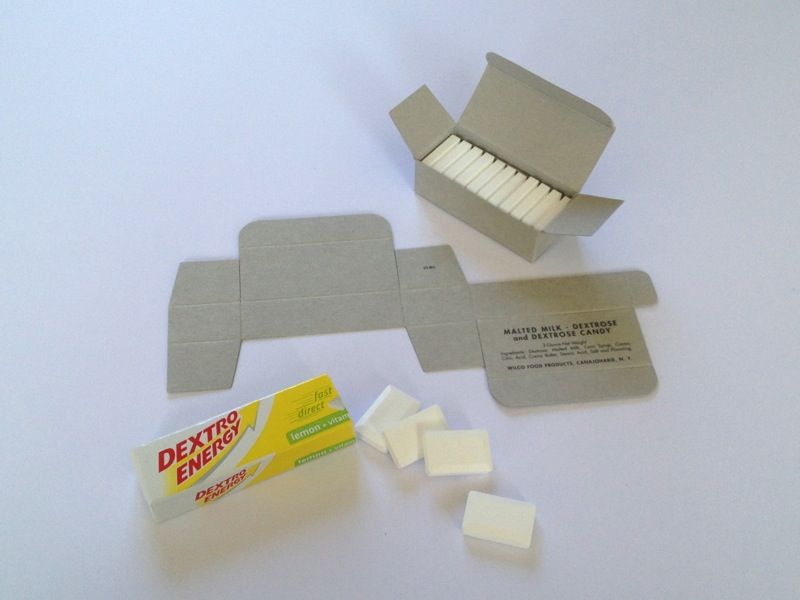
Matchbook covers
Included in the ration kits are matchbook covers. To make a complete matchbook you need to get a modern matchbook (preferably with cardboard matches) from which you remove the matches by pulling out the staple.
For a K Ration matchbook you need one row of 10 matches, for the 10-in-1 Ration kits you need two rows of 10 matches, and two rows of 5 matches for the small C Ration matchbook.
Fold over the striker strip on the creasing and insert in the fold one or two rows of matches. Staple completely through the cover and matches just under the striker strip. Bend the rest of the cover over the matches and tuck under the striker strip, closing the matchbook.
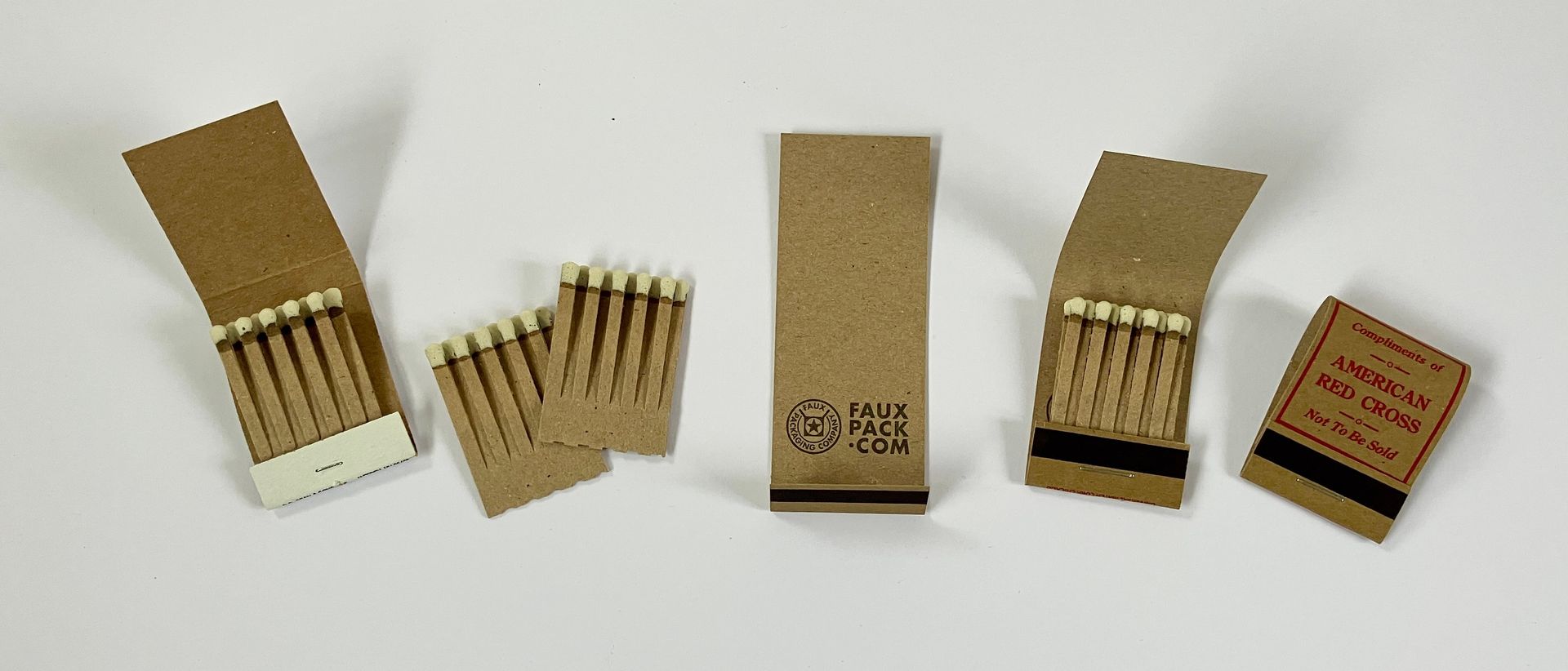
Can Sleeves
The can that goes in the K Ration was inserted in a cardboard sleeve to protect the inner carton of the K Ration. When the can is inserted it should stick out 1/4 inch. A key for opening the can should be placed on one end of the can (under or on top of the can). The matchbook included with the dinner unit is placed at the other side of the can inside the sleeve.
Sugar cubes
Obviously the most tedious job is wrapping the sugar cubes that goes into the breakfast unit of the K Rations. Originally, the size of the sugar cubes used are larger than today and aren't easy to find. There is still one brand here in Holland that makes them and these are roughly the same size as the original sugar cubes.
If desired, I can provide you with a box of these large size sugar cubes. A box weighs two pounds and holds about 160 cubes.
Biscuits, C square
The baby biscuits made by Liga are just the right size to fit the two-pound boxes used in the 10-in-1 Rations. Forty biscuits will fit nicely. The boxes are first lined with a sheet of glassine (you can use a sheet of white parchment baking paper for this). After filling the box the liner is folded neatly on top of the biscuits, after which the box is closed. Finally the box is over wrapped with cellophane or waxed paper.
